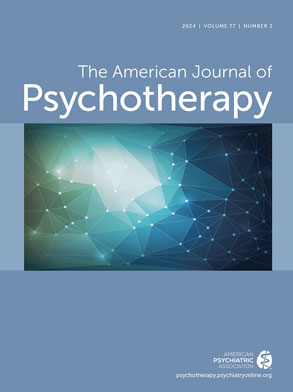Richard von Krafft-Ebing: Psychopathia Sexualis: The Case Histories. (D. Fall, Trans.). Washington, D.C.: Solar Books, 2011, 213 pp., $16.95. ISBN-13 978-0982046470
Krafft-Ebing’s now classic work on deviant sexuality is both a landmark in psychiatric literature and an historical curiosity. His Psychopathia Sexualis was originally published in 1886 in German. It wasn’t until the 12th edition that it was published in English.
The edition under review is an edited version of the case studies, translated and edited by Dr. Domino Fall, with an introduction by Ms. Terence Sellers, dated 1996/1997 and reprinted 2011. Context for this edition is difficult to establish. Certainly, Sellers is known as the author of The Correct Sadist: The Memoirs of Angel Stern (Blue Moon Books, 1996) and has a long history exploring and documenting so-called deviant sexuality and sadomasochistic lifestyles spanning several decades. The edition under review appears to be a reprint of the 1997 Creation Books edition, billed as the 13th edition of the original Psychopathia Sexualis, for which Ms. Sellers was asked to contribute the Introduction. In her own words, she was,
Honored and inspired by the opportunity to write an Introduction to the 13th Edition, published by Creation Books UK in 1997, she was nonetheless disappointed to realize much of her original essay was cut. The most salient points, that Krafft-Ebing’s moral stance, though antique, is still valid; that his literary style is more vital and informative than any modern “clinical” text; his use of prostitutes as “colleagues‘ in his research, are all in this restored version” (
Sellers, 2008a).
More difficult to track down was Dr. Fall, the editor and translator of this edition. Her affiliation is not noted on the Solar Books edition. The Creation Books edition is extremely difficult to track down, not showing on the Creation Books website or in various on-line book sellers. There is one reference to Dr. Domino Fall as a lecturer in psychopathology at the University of London, where she specializes in Germanic studies. However, her name does not appear in current listings of the Institute of Germanic and Romance Studies (
http://igrs.sas.ac.uk/staff/honorary-fellows.html) or the neurosciences department (
http://www.ucl.ac.uk/ psychoanalysis/unit-staff/staff.htm).
While I do not question the existence of Dr. Fall, there is a point to this somewhat naive exercise in academic detective work. Here we have a reprint of an historical landmark in the psychiatry of sexuality and the credentials of the editor/translator are extremely difficult to verify. As well, the introduction is written, perhaps unexpectedly and certainly unconventionally, by a dominatrix whose collected writings were purchased by New York University in 2005.
What does this obscurity and unconventionality mean for the text itself? In examining the Solar Books edition, I read various cases side by side with my own copy of the “only authorized English adaptation of the twelfth German edition” (revised edition) published in 1929 by the Physicians and Surgeons Book Company, New York. Immediately several differences are apparent. The Solar Books edition truly is only the case studies. Dr. Krafft-Ebing’s roughly 59-page introduction, including his classification theory, physiology and anthropological review, is missing. Case 1 in the Solar Books edition is one paragraph. In the 1929 edition, it is three. Further, reference material including in-text citations and footnotes are missing in the Solar Books edition. For example, case 102 describes a case of hair fetishism. Much of the two texts are identical until the end of the first paragraph, where subtle differences in words appear. One can argue that the meaning is not changed substantially by these changes, but where the original English translation appeared clear; one wonders the editor’s purpose in making such small changes. A Latin phrase is also translated—in the original English 1929 edition, the phrase reads, “…even to the extent of taedium vitae.” (p. 245). In the Solar Books edition, this is written as “…even to the extent of suicidal thoughts” (p. 84). Essentially this is accurate as taedium vitae translates to “weariness or loathing of life” (Miriam Webster, 2011) but something is lost in concretizing the essence of the malaise or ennui found in the Latin for the simpler and perhaps cruder “suicidal thoughts.” Throughout the Solar Books edition, Latin phrases are translated into English.
Through various collections, Solar Books appears to present classics that inform and drive what is commonly referred to as the avant-garde movement, with an emphasis on Surrealist works. Including the Psychopathia Sexualis as part of this collection appropriates an early attempt to document the deviance of human sexual desire and subsumes it under the rubric of the avant-garde. For the clinician or researcher looking for historical accuracy, the Solar Books edition is not your text. It exists as a member in the library of a publisher aiming to capture and document the necessities of Surrealism. As such, the text is adequate and would provide the lay person with a clear sense of Krafft-Ebing’s cases. Seller’s introduction adds some context to the text although her authority is obscured. Immersion in the sadomasochistic lifestyle does not preclude academic rigor, but the professional reader may question some of her observations. For example, she equates neurasthenia with a modern day diagnosis of depression, not noting that it remains current as a diagnosis in the ICD-10 under the category of “neurotic, stress-related and somatoform disorders” (Code F48.0, World Health Organization, 2007). Her analysis of the pattern of use of prostitutes presented in the cases studies of men, is much like an elementary Kleinian examination of the good breast/bad breast (p. 9-10). At her conclusion, she reveals her voice as both dominatrix (a well-established credential) and psychologist (based on a bachelor’s degree). Again, as context for a book designed to fill a niche in an art/culture library, this edition is interesting. If you wish to read the cases in their entirety, embedded in the context of Krafft-Ebing’s theory and clinical approach, and are reading for clinical or academic purposes, you will be better served seeking an original translation.

